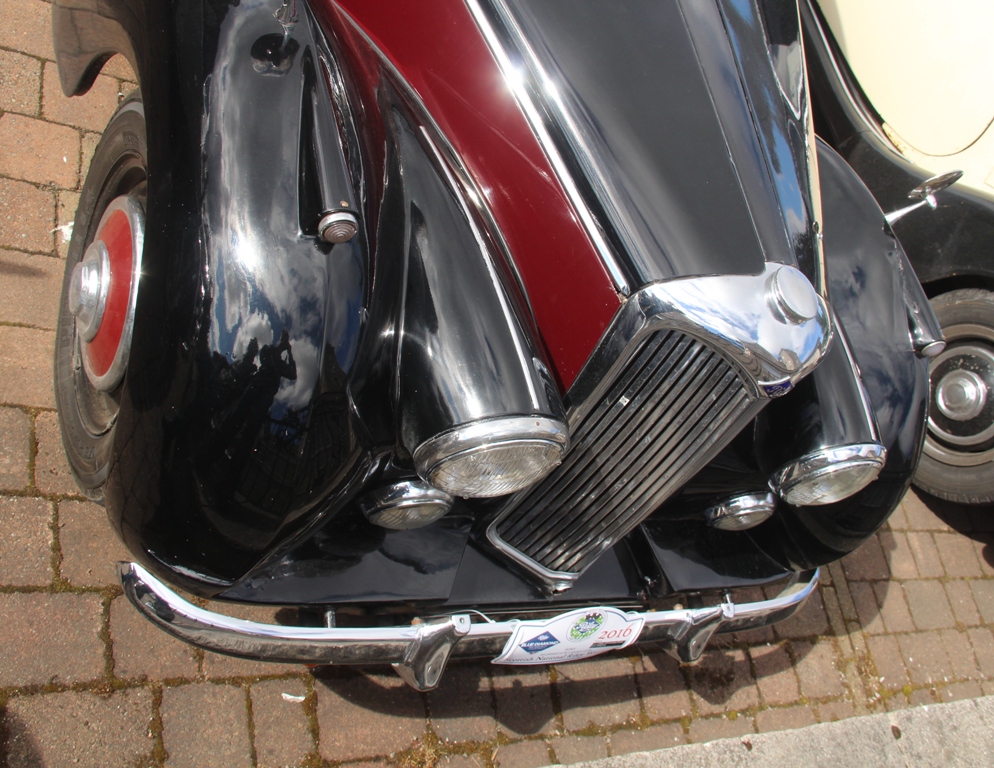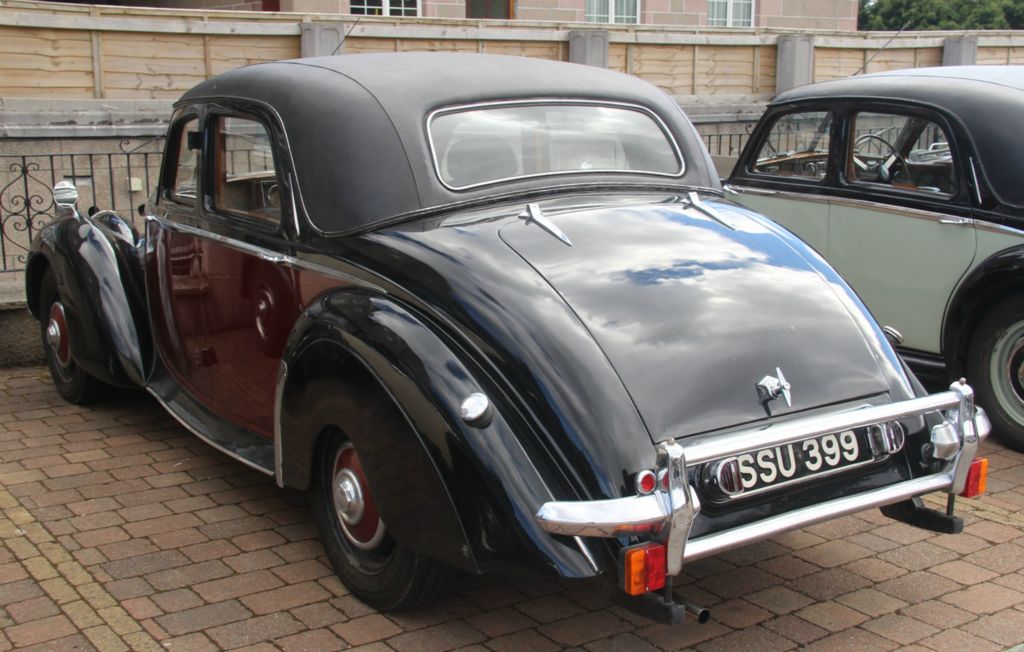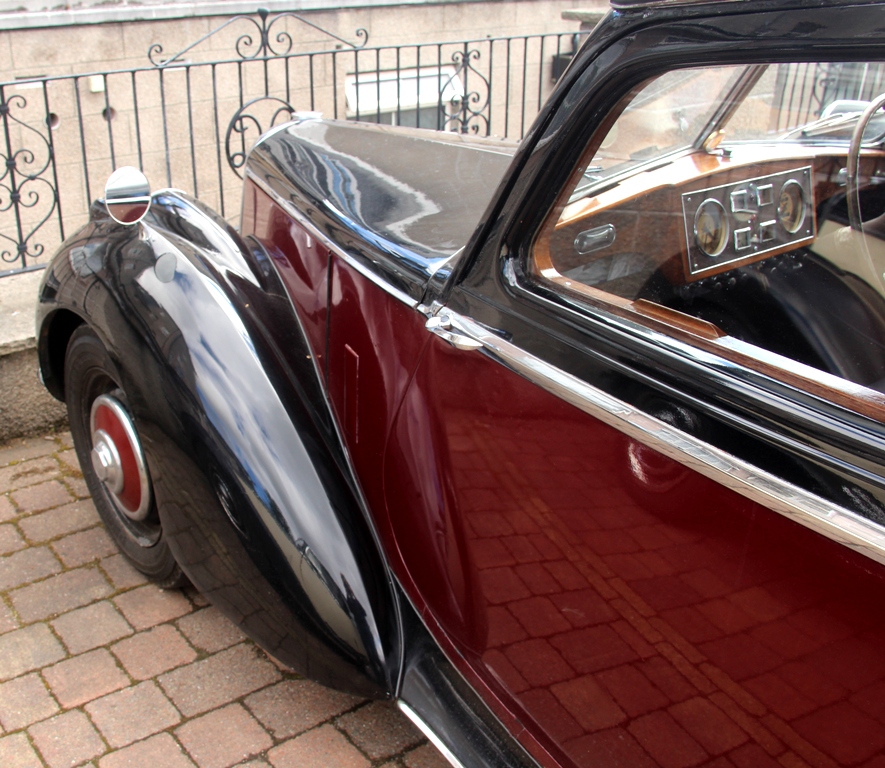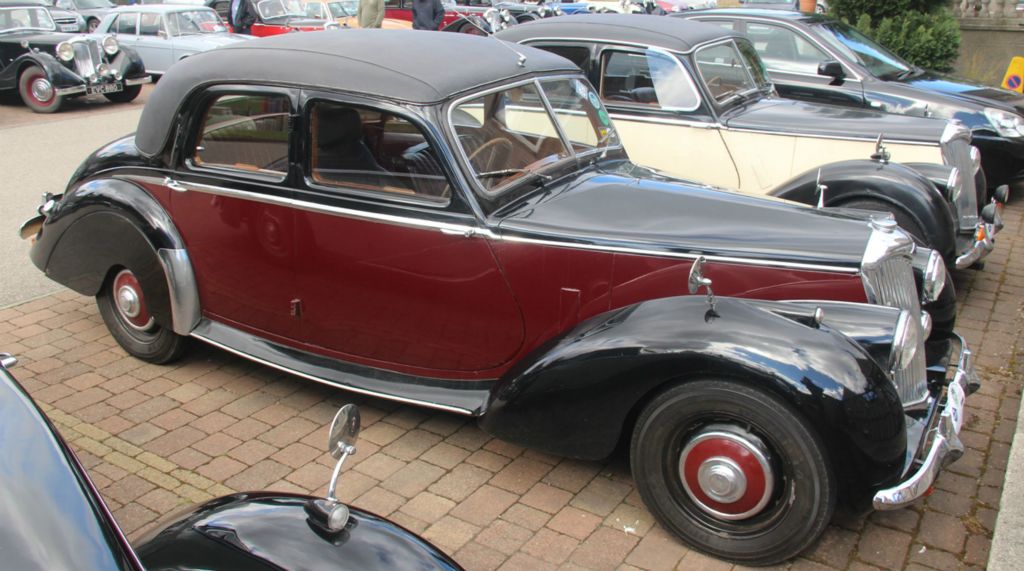Riley RME. (1953-55)
In 1953, the RME was due to be replaced by the MG Z series Magnette based RMG model as part of Nuffields rationalisation. By then, the RM series cars had no parts commonality with any other models, making them expensive to produce. However, whilst the RMF was replaced by the Pathfinder, for some reason the RME was given a facelift and left to soldier on for another 2 years.
The facelift has split opinion ever since. The running boards were removed, with the wings redesigned to suit and some then-fashionable spats added to the rear wheel arches. Extra chrome trim was also added, and it seems to have been in an attempt to make the car look more American, as was the fashion at the time.
It didn't work. Sales did not improve, and after 2 more years the car was axed by BMC, perhaps wishing that they had signed off on the RMG after all! It was also the end of the pre-war 12/4 engine, which had led to a resurgence in Riley sales in 1934 when first launched, but had been left to die, almost unloved in the last of these RMEs.
This left Riley with just a single model on sale, and things may well have looked bleak to Riley fans, but fortunately the RME was eventually replaced, by the One Point Five model in 1957.
Identification
The main changes to the RME in 1953 are outlined above, and should enable later cars to be identified from a distance, however when you get up close there are a suprising number of other, less obvious differences. Starting at the front:
ENGINEHigh camshafts and push-rod 90-deg ohv1496cc 4cyl ohv Compression ratio 6.8:1 Bore 69mm Stroke 100mm 54bhp at 4,500rpm Carburration H2 SU |
TRANSMISSIONFour-speed gearbox, Synchro on 2nd,3rd,4th.Overall gear ratios: 1st 20.37:1 2nd 11.73:1 3rd 7.58:1 4th 5.12:1 Reverse 20.37:1. |
SUSPENSIONIndependent front suspension with twin wishbones, torsion bars and hydraulic telescopic dampers.Semi Elliptic at rear |
BRAKESGirling Hydro-mechanical.10inch dia drums. |
PERFORMANCE0-50mph 18.6secStanding ╝mile 24.3secs Max Speed 74.7mph Fuel Consumption 26mpg |
DIMENSIONSWheelbase 9'4.5" (aprx 3850mm)Track 4'4.5" (aprx 1320mm) Length 14'10" (aprx 4510mm) Width 5'2.5" (aprx 1560mm) Height 4'9" (aprx 1420mm) Turning Circle 30' Tyres Weight 24.5cwt Fuel Tank |
PRICE |




